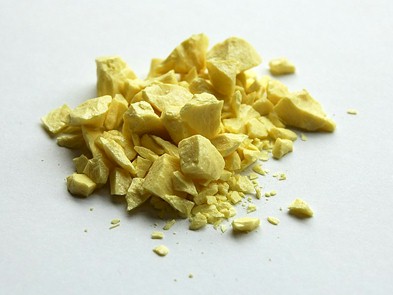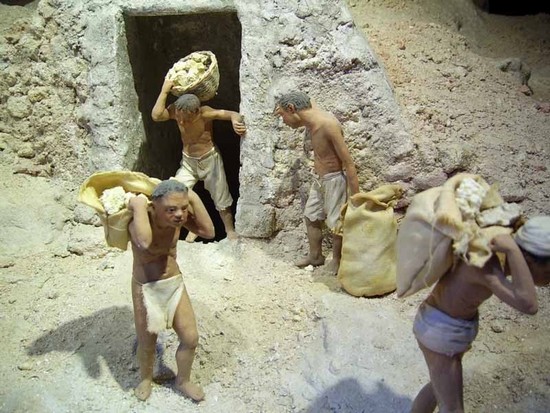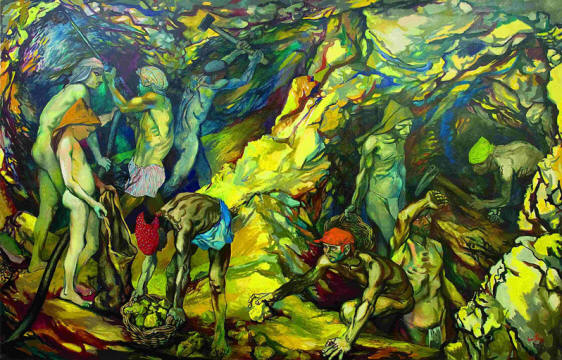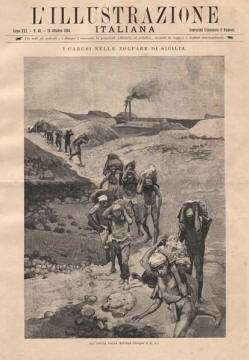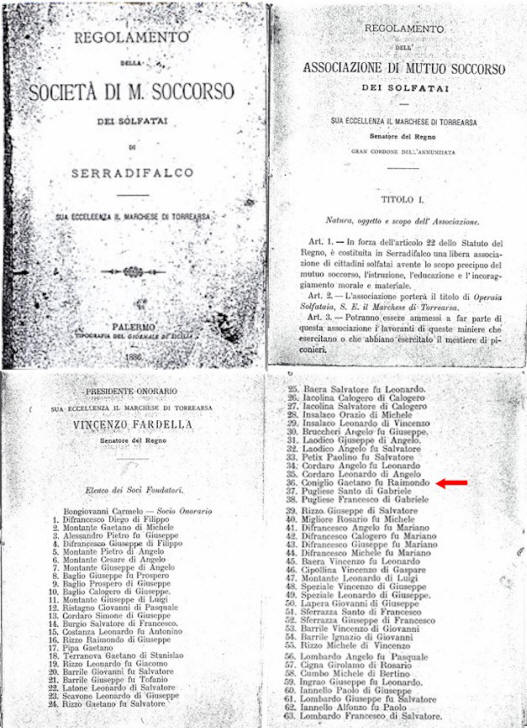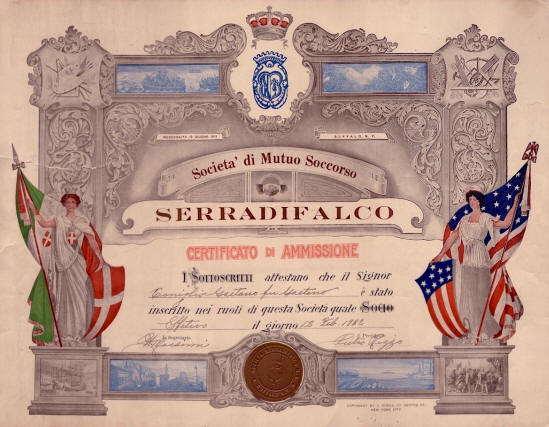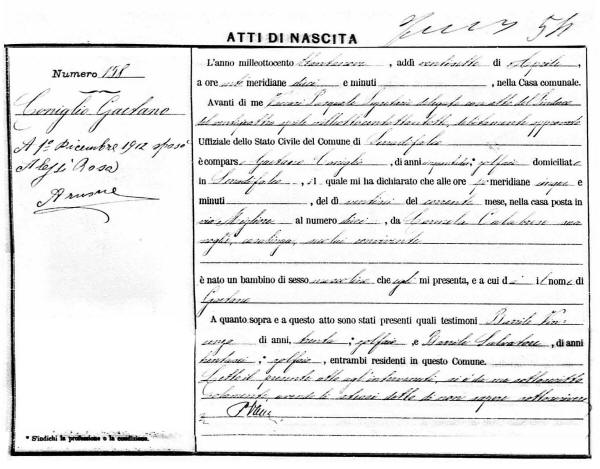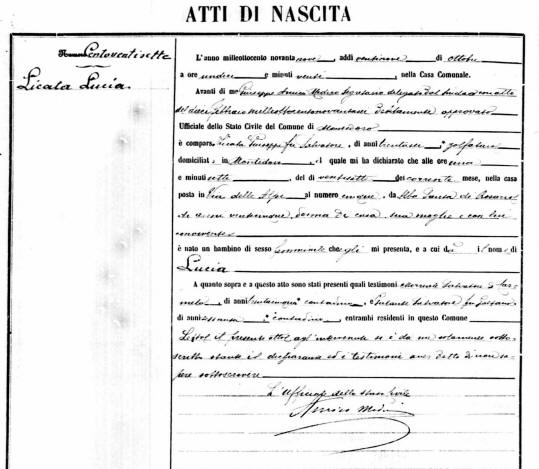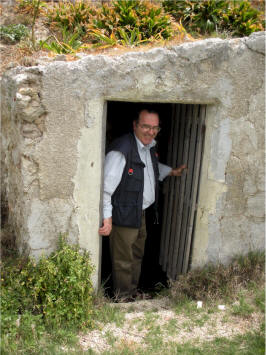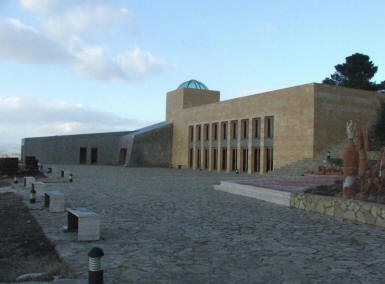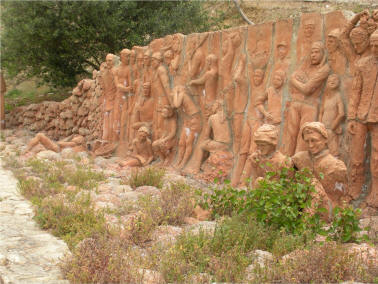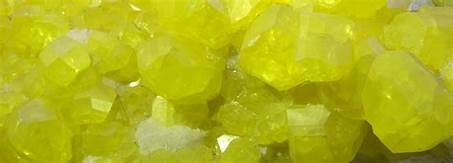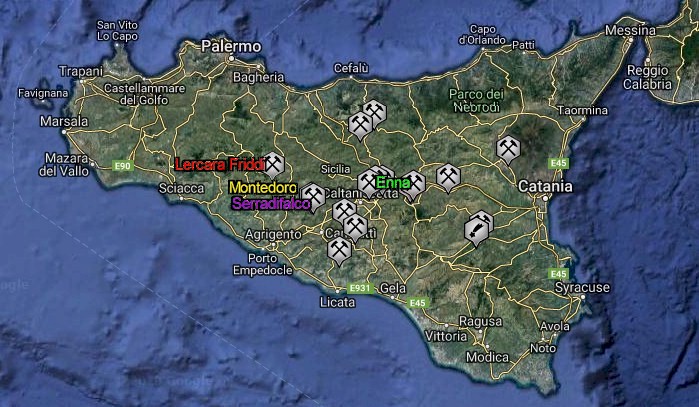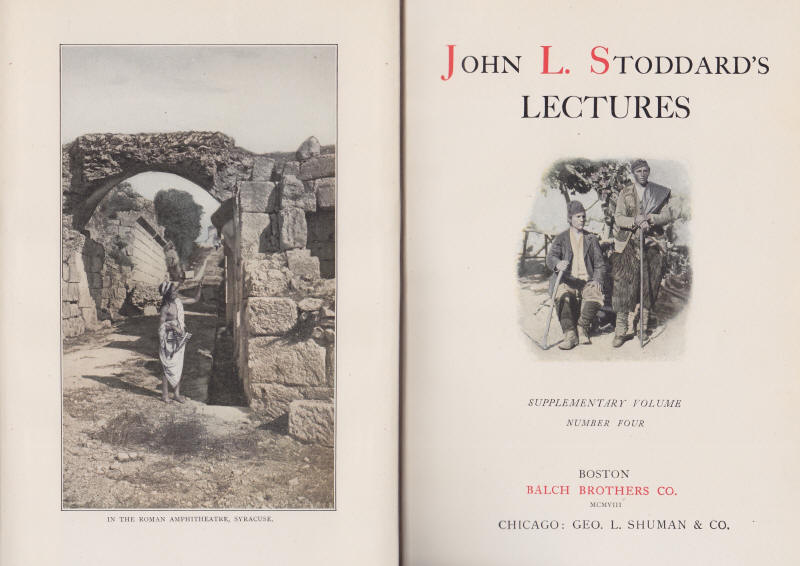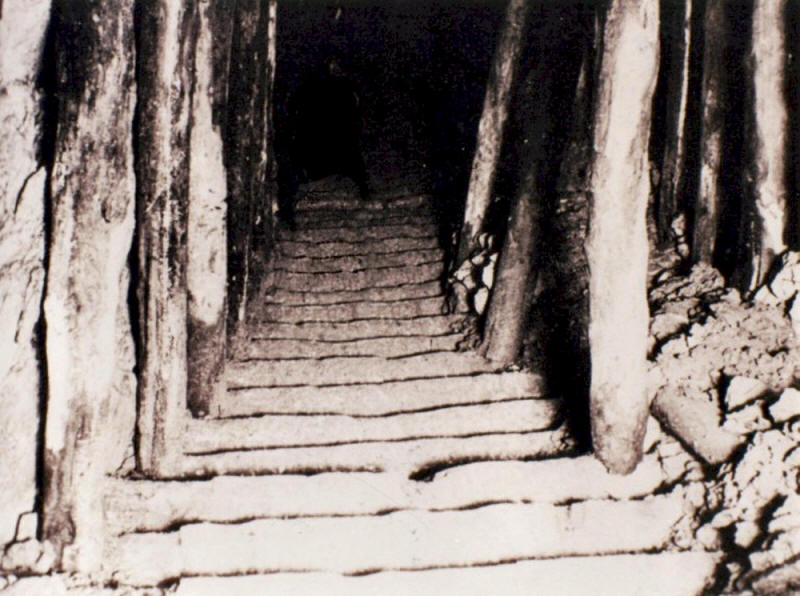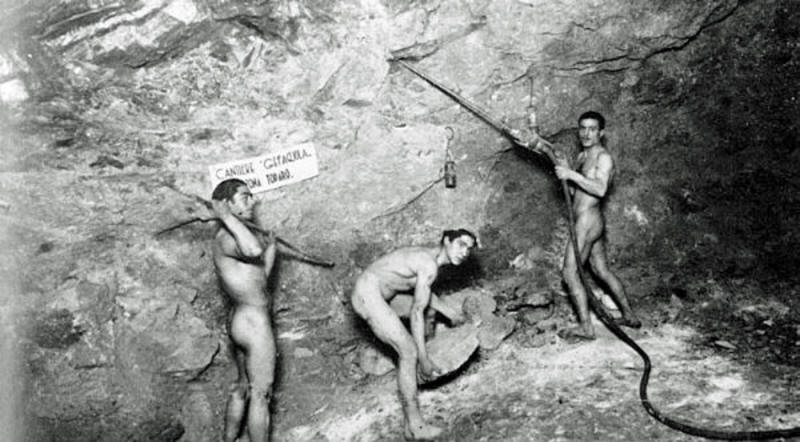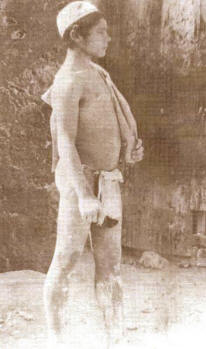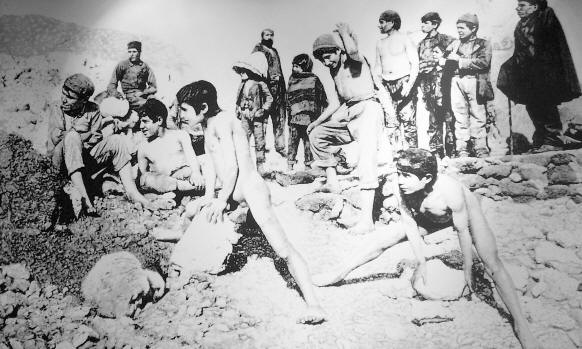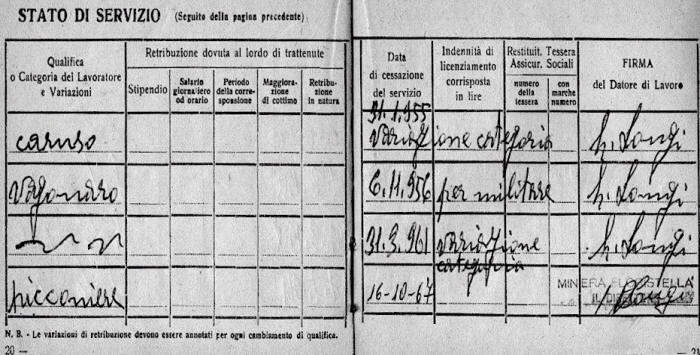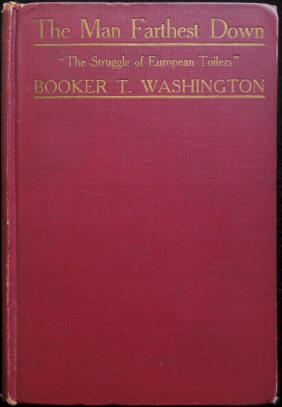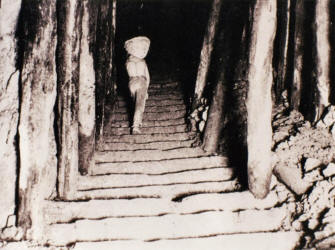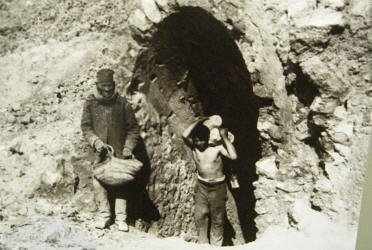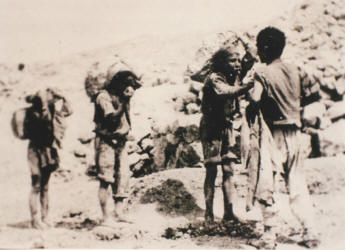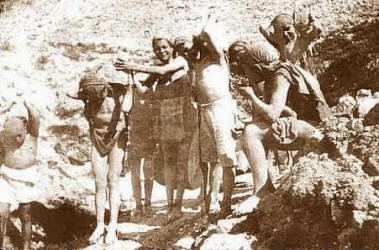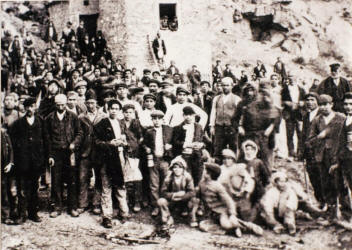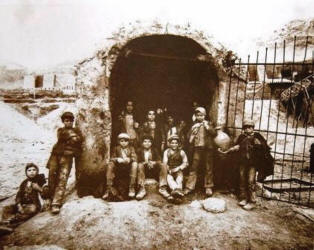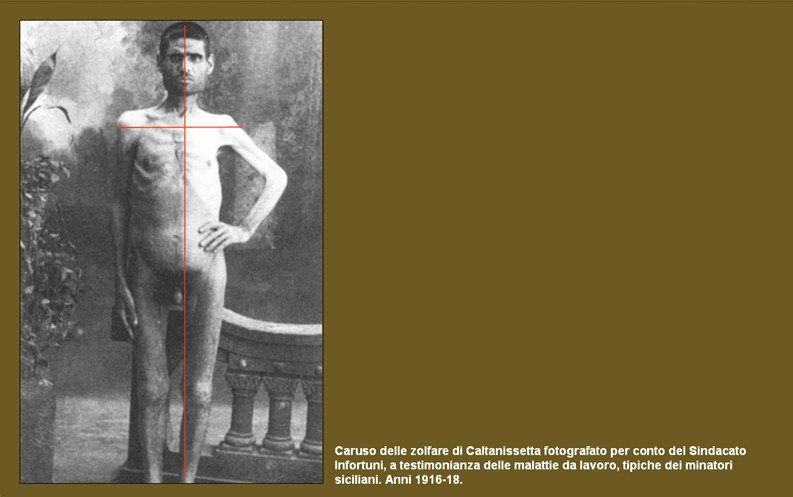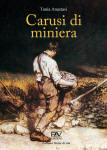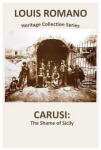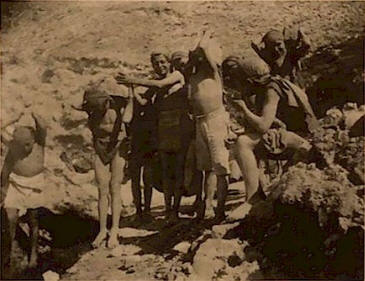|
I “carusi” nelle solfatare della Sicilia ovvero quando i bambini
siciliani venivano venduti o “affittati” per lavorare nudi nelle
miniere di zolfo anche 16 ore al giorno
Pubblicato il 12 maggio 2015
Un saggio rigoroso e commovente, fra storia e letteratura – di Ugo
Passanisi
Discutere il tema dei carusi significa rievocare una delle pagine più
tragiche, umilianti e vergognose, ma anche meno conosciute della
storia del popolo siciliano. Una storia, in ogni caso, peculiare
della Sicilia che non trova alcun paragonabile riscontro in
avvenimenti consimili in altre regioni del nostro Paese. Quella
dei carusi è una vicenda che inizia nel 1700 e che si sviluppa
per oltre due secoli fino alla metà del ‘900. Inizia con i
Borboni ai quali sopravvive, e continuerà in seguito anche dopo
l’annessione del Regno delle Due Sicilie alla corona dei Savoia
e alla proclamazione a primo re d’Italia di Vittorio Emanuele
II. Con il nuovo regime, infatti, nulla cambia per la Sicilia,
anzi, le rivolte contadine contro il latifondo sono soffocate
nel sangue dai garibaldini di Nino Bixio, come è avvenuto – ma
non sarà il solo caso – con il processo sommario e l’eccidio di
Bronte. I grandi proprietari terrieri hanno mantenuto
saldamente nelle loro mani il possesso del territorio, e sono
andate deluse le grandi attese di riscatto riposte in Garibaldi
e nel nuovo regime dai braccianti affamati di terra – i
cosiddetti “picciotti” tanto esaltati dalla retorica
risorgimentale – che pure, per questo motivo e con questa
speranza sono accorsi in massa sotto le sue bandiere. La Destra
storica ha imposto ancora una volta la sua legge e, come sotto i
Borboni, la miseria continua a regnare sovrana nelle campagne
dell’Isola. Questa premessa è indispensabile per spiegare le
ragioni profonde che, nella seconda metà dell’800 e nel primo
‘900, hanno determinato l’esodo massiccio di migliaia di
siciliani, giovani, vecchi e bambini, non solo verso le Americhe,
ma anche, per coloro che sono rimasti, dal contado alle miniere.
E in questo contesto storico, in questa situazione sociale,
perciò, non può cambiare, anzi riceve maggiore impulso la
drammatica vicenda dei carusi. Ma, chi sono questi
carusi ? Con il termine carusi vengono indicati i
bambini e i ragazzi costretti dall’indigenza economica delle
loro famiglie a lavorare nelle miniere di zolfo. Il termine
pare sia derivato dalla consuetudine di rasare completamente la
testa di questi giovanissimi lavoratori, probabilmente per i
motivi igienici conseguenti alle condizioni di estrema sporcizia
esistenti nelle miniere: tale taglio di capelli veniva di fatto
definito nel dialetto tipico dell’epoca della zona di
Caltanissetta come tagghiu carusu, mentre successivamente
servirà a indicare genericamente i bambini dai 5 ai 12 anni
circa. Ancora oggi, segnatamente nel catanese, ma anche in altre
zone della Sicilia, le parole carusu, carusazzu, identificano il
“ragazzo”, il “ragazzaccio”.
C’è da dire che, anche secondo la legislazione del tempo, era
illegale impiegare nel lavoro manuale un minore di 12 anni in
quanto la legge stabiliva, già allora, che la scuola dovesse
essere obbligatoria per i bambini fino alla terza classe
elementare. Tuttavia, questa disposizione veniva largamente
disattesa a causa della miseria nella quale vivevano le famiglie
contadine che costringeva tutti al lavoro nei campi fin dalla
più giovane età, come è dimostrato dal fatto che l’analfabetismo
raggiungeva, particolarmente nelle campagne, percentuali
altissime, assai vicine al 100%. Del resto, le autorità
governative dell’epoca si preoccupavano di tutto fuorché di
farla rispettare, attente com’erano a non venire in conflitto
con gli interessi economici della grassa borghesia costituita
dai proprietari terrieri, da cui erano lautamente foraggiate,
che traeva lauti guadagni dallo sfruttamento del lavoro minorile.
Per lo stesso motivo nessun controllo veniva esercitato sulle
condizioni di lavoro nelle miniere che erano durissime,
addirittura inaccettabili secondo gli standard odierni di
sicurezza, mentre il rispetto dei diritti umani, dell’infanzia e
dei lavoratori, erano pressoché inesistenti. L’orario di lavoro,
infatti, poteva arrivare anche a sedici ore giornaliere, e i
ragazzi subivano abitualmente maltrattamenti e punizioni
corporali se accusati di mancanze di qualsiasi genere o di
scarso rendimento senza che alcuno avesse il potere di
intervenire in loro difesa. Ai genitori dei ragazzi arruolati
come manovalanza nelle miniere veniva corrisposto un pagamento
anticipato, che poteva variare da 100 a 200 lire, chiamato
“soccorso morto”.
In pratica si trattava di un vero e proprio prezzo di
compravendita poiché la paga dei carusi era di pochi centesimi
al giorno dalla quale veniva dedotto il costo del vitto fornito
dal picconiere alle cui dirette dipendenze i carusi
lavoravano, chiamato “spesa”, spesso costituito da alimenti di
pessima qualità, o addirittura di solo pane, fornito inoltre ad
un prezzo esoso. Ai genitori dei ragazzi era quindi
praticamente preclusa ogni possibilità di riscatto dei propri
figli che divenivano, di fatto, proprietà esclusiva del
picconiere che li aveva acquistati e che poteva disporre di
loro a suo piacimento. Le condizioni di vita dei carusi hanno
trovato larga eco nel passato nella letteratura siciliana. Le
descrive ampiamente Giovanni Verga nel racconto “Rosso
Malpelo”, e così ne parla Luigi Pirandello nella sua novella
“Ciaula scopre la luna”: “Nelle dure facce quasi
spente dal buio crudo delle cave sotterranee, nel corpo
sfiancato dalla fatica quotidiana, nelle vesti strappate,
avevano il livido squallore di quelle terre senza un filo d’erba,
sforacchiate dalle zolfare, come tanti enormi formicai …. Ciàula
si mosse sotto il carico enorme, che richiedeva anche uno sforzo
di equilibrio. Sì, ecco, sì, poteva muoversi, almeno finché
andava in piano. Ma come sollevar quel peso, quando sarebbe
cominciata la salita?”
Ed è ricchissimo, poi, il repertorio poetico e di canti popolari
dal quale traspare la cupa rassegnazione degli zolfatari alla
loro misera sorte, anche se non ancora la rabbia e la ribellione
contro lo sfruttamento che sarebbero maturati solo molto più
tardi, nei primi decenni del ‘900, grazie alle lotte di
sindacalisti agguerriti e combattivi. Anche in tempi moderni la
tragedia di questi ragazzi è stata rievocata da Andrea Camilleri
nel suo romanzo “Il sonaglio”. In questo racconto il
reclutatore di bambini così si rivolge a un gruppo di madri in
ascolto: “Mi chiamo Filibertu Alagna e vengo da un paisi
ricco che si chiama Alagona. L’aviti ‘ntiso nominari? E’ un
paisi ricco pirchì havi cinco minere che sunno i posti indove
scavanno veni fora il surfaro…. Nelle minere travagliano, pagati
bono, òmini granni, carusi e picciotteddri. L’etati dei carusi
va dai se’ all’unnici anni, quella dei picciotteddri dai dudici
ai diciotto. Per ogni jornata di travaglio al caruso spettano
ottantacinco cintesimi, al picciotteddro ‘nveci novanta. Vi
spiego come funziona la facenna. Ogni caruso o picciotteddro
veni pigliato in custoddia da un picconeri, il quale ci pensa
lui a darigli da mangiari, naturalmente tinennosi qualichi
cintesimo dalla paga. Ma ccà veni il bello. Il picconeri, in
cangio di vostro figlio, vi duna ‘na cosa che si chiama soccorso
morto. Soccorso significa aiuto e morto veni a diri che voi ve
lo pigliate e non doviti arrestituirglielo. Il soccorso morto
consisti in ducento liri, arripeto, ducento liri, che io vi
dugno manu cu’ mano, e per conto del picconeri, al momento nel
quale mi consegnate vostro figlio. Se minni date dù, io vi
dugno quattrocento liri, se minni dati tri io vi dugno seicento
liri. Mi state accapennu? Questi sordi addiventano vostri e vui
ne potiti fari quello che voliti e non doviti renniri cunto a
nisciuno. Pinsatici bono. Un caruso sino a deci, unnici anni,
che vi rappresenta ‘n famiglia? Un piso. Non travaglia ed è ‘na
vucca da sfamari. Dànnolo a mia, il caruso travaglia e guadagna,
non vi pisa cchiù supra alli spalli e vui v’attrovati ad aviri
‘n mano tanto dinaro che manco in sogno. Parlatene a tutte le
fimmine che accanoscite e parlatene coi mariti vostri. Io sugnu
alla pinsioni Pace. Portatemi i figli vostri e io ve li pago
subito. V’avverto: resto ancora tri jorni. Non facitivi scappari
la fortuna.”
Dunque un discorso persuasivo ed estremamente convincente
per chi, giornalmente, è costretto a tagliare col coltello la
fame propria e quella della propria famiglia. E infatti Zina,
una delle donne presenti, ne parla col marito Adelio,
poverissimo pescatore la cui attività gli consente a stento di
sopravvivere alla miseria più nera. Adelio esita, non vorrebbe
privarsi del figlio che lo aiuta nel suo lavoro, ma la proposta
è allettante e, alla fine, spinto dalla necessità, decide di
chiedere consiglio al suo unico cliente, un certo Don Pitrino
Vadalà. Ma come e dove nasce in Sicilia l’industria dello zolfo?
Siamo nel cosiddetto altipiano dello zolfo, quello che da
Caltanissetta va ad Agrigento. Se si guarda una cartina
geologica della Sicilia dove i giacimenti di zolfo sono segnati
a macchie rosse, si vede che le sparse tracce, partendo dai
territori di Calatafimi e di Lercara Friddi e, nel catanese e
nell’ennese, da Assoro a Licodia Eubea, a mano a mano si
infittiscono tra Cianciana e Valguarnera, diventando un continuo
lago rosso attorno ad Agrigento, da Aragona a Serradifalco. Già
al tempo dei Romani abbiamo notizia che lo zolfo affiorante
viene raccolto, e quello sotterraneo viene scavato, fuso, e poi
solidificato in pani, come è attestato dalle lastre di
terracotta col marchio di Racalmuto conservate al Museo
Nazionale di Palermo, per essere poi impiegato in medicina e nel
trattamento delle stoffe.
Ma quella che è la storia vera e propria dell’industria
zolfifera dell’Isola, dell’estrazione sistematica dello zolfo e
della sua esportazione, comincia, come abbiamo detto, nel ‘700
sotto i Borboni con la prima rivoluzione industriale e con la
scoperta di un nuovo metodo di preparazione dell’acido solforico
che aveva larghissimo utilizzo nell’industria tessile e in
quella bellica degli esplosivi. Lo scoprono per primi, e ne
intuiscono le enormi potenzialità economiche, gli imprenditori
francesi e inglesi. Una compagnia francese, in particolare,
avrebbe voluto creare un’industria di lavorazione sul posto
costruendo una raffineria di zolfo con due camere di
sublimazione a Porto Empedocle. La stessa compagnia richiese
poi il monopolio di compravendita dello zolfo siciliano, ma
poiché gli inglesi minacciavano di bombardare i porti del
meridione se questa richiesta non fosse stata respinta,
Ferdinando II di Borbone, nel 1836, fu costretto a revocare la
concessione e a sciogliere la società. Ciò stroncò una grande
occasione economica per la Sicilia a tutto vantaggio degli
esportatori stranieri, principalmente francesi e inglesi, i soli,
insieme a pochissimi proprietari terrieri siciliani, a essersi
arricchiti con lo sfruttamento del sottosuolo dell’Isola, senza
che mai i proventi di questa ricchezza del nostro territorio
fossero reinvestiti in Sicilia. Lo zolfo siciliano, di ottima
qualità, imbarcato su velieri, veniva inviato a Marsiglia per
essere poi lavorato all’estero per i mercati francese e
britannico. Ancora una volta la Sicilia venne trattata come una
colonia da sfruttare e dovette soccombere alla prepotenza dello
straniero. Già sul finire di quel secolo attivissime erano le
miniere di Palma di Montechiaro, Petralia Sottana, Racalmuto,
Riesi, San Cataldo, Caltanisseta, Favara, Agrigento, Comitini,
Licodia Eubea. Nel 1890 ne sarebbero state in esercizio ben 480
e nei primi anni del ‘900 le miniere attive sarebbero diventate
886 con circa 40.000 occupati. La febbre dello zolfo prende
tutti: proprietari terrieri, gabelloti, picconieri, commercianti,
magazzinieri, carrettieri, artigiani, carusi. Coinvolge
imprenditori stranieri e speculatori di ogni nazionalità.
Attira masse di uomini dai popolosi paesi dell’interno
dell’Isola, dai miseri centri del feudo, in questa sterminata
landa dove, da secoli, le possibilità di lavoro dipendono dal
capriccio del gabelloto e dei suoi sottostanti, dalla soggezione
a costoro; dove le giornate lavorative si riducono a poche
nell’arco dell’anno; dove il contadino è angariato da tasse,
decime e balzelli di ogni tipo a cui bisogna aggiungere le
tangenti illegali; dove le squadre di lavoratori stagionali,
mietitori e spigolatori, sono costrette al nomadismo; dove la
vita, insomma, raggiunge inimmaginabili livelli di sfruttamento
e di miseria. La miniera, dunque, appare come un miraggio nel
deserto e offre una speranza di riscatto a una moltitudine di
miserabili diseredati. E’ una febbre che cresce col tempo e si
sviluppa nell’arco di due secoli fino al ‘900, quando, per la
concorrenza sui mercati internazionali dello zolfo americano,
decresce fino a sparire del tutto negli anni ’60, lasciando
tutto come prima, peggio di prima, com’è destino di questa terra
infelice, come avverrà – poiché la Storia si ripete – negli
anni ’90 con l’industria petrolifera e petrolchimica, com’è
successo nel primo decennio del 2000 con l’industria
automobilistica a Termini Imerese. Nel 1934 una legge dello
Stato italiano vietò alle donne e ai ragazzi di età inferiore ai
16 anni di calarsi all’interno delle zolfare mentre già da
qualche anno prima, nel 1927, era stata sancita per legge la
demanialità del sottosuolo. Solo lo Stato poteva assegnare in
concessione, perpetua o temporanea, lo sfruttamento dei
giacimenti. Negli anni successivi alla seconda guerra mondiale,
malgrado gli interventi governativi prima e regionali dopo,
malgrado la nascita nel 1963 dell’Ente Minerario Siciliano, l’
E.M.S., continuò il declino dell’attività estrattiva dello zolfo
e, a una a una, le miniere chiusero irreversibilmente. E un
destino ancora peggiore è toccato alle miniere di sali potassici
di Pasquasia, dapprima abbandonate e successivamente trasformate
in un deposito di migliaia di tonnellate di amianto e, pare, di
scorie nucleari.
Ma, in ogni caso, al di là della concorrenza americana,
l’industria mineraria siciliana non poteva avere prospettive di
sopravvivenza a causa della carenza di capitali da investire
nella modernizzazione degli impianti di estrazione, delle
infrastrutture, strade e ferrovie, per l’insufficienza dei porti,
per la mancanza di spirito imprenditoriale, per la pochezza
dell’industria chimica isolana. Quella della zolfara è stata,
dunque, una storia triste di miseria, di sfruttamento
indiscriminato, di sofferenze indicibili, di morte, di
abbrutimento, di negazione della dignità umana. Sull’altipiano
sono rimasti l’amaro della delusione e della sconfitta, un mare
di detriti, cumuli immensi di scorie, un vasto cimitero di
caverne risonanti, di miniere morte, di tralicci arrugginiti, di
binari contorti dei carrelli. Qui sono tornati a ricrescere i
cespugli spinosi del deserto, sono tornate a strisciare le serpi,
a volteggiare i corvi. Purtroppo la Storia, quella con la “S”
maiuscola, non è mai servita a insegnare qualcosa agli uomini:
solo oggi, forse, si comincia a comprendere che la vocazione di
questa nostra terra, ricchissima di storia, di reperti
archeologici unici al mondo, di splendide spiagge, di isole e
arcipelaghi meravigliosi, di bellezze naturali e
architettoniche senza pari, non può essere quella industriale,
ma che il suo futuro risiede soltanto nello sviluppo di
un’agricoltura razionale, moderna e meccanizzata, e, soprattutto,
di un turismo di qualità.
Si pensi, solo
per un momento e per fare un esempio che è sotto i nostri occhi,
che cosa avrebbe potuto costituire dal punto di vista turistico,
e quale grandiosa occasione di sviluppo occupazionale avrebbe
potuto rappresentare la valorizzazione della fascia costiera che,
dalle foci del Mulinello e del Marcellino, dall’Hangar
dirigibili di Augusta, passando per le rovine di Mègara Hyblaea
giunge a Thapsos nella penisola Magnisi, al seno di Priolo e
oltre: al suo confronto la tanto celebrata costiera adriatica
farebbe la figura della parente povera. Porticcioli turistici,
alberghi, ritrovi, night, luoghi di ristoro e di sport acquatici,
pescaturismo, spiagge tropicali, un mare cristallino, tutto
nell’ambito protetto della rada: un sogno, a fronte del quale
rimane un deserto di rottami industriali arrugginiti, una terra
avvelenata dai rifiuti tossici, un mare inquinato da veleni di
ogni tipo, una costa deturpata per secoli, forse per sempre. E
il cancro. Ma vediamo com’era organizzata, in quei due
secoli passati, l’attività della miniera. In superficie,
rintanati nei loro palazzi di Palermo, di Agrigento e di Catania,
i proprietari dei terreni che, per legge, erano anche
proprietari del sottosuolo, non ancora considerato proprietà
demaniale, i quali, senza alcun rischio né preoccupazione,
ricevevano dal gabelloto, cioè dal concessionario, l’estaglio, cioè
una quota del profitto, che poteva raggiungere il 30% derivante
dalla vendita del prodotto. C’era poi una vasta categoria
parassitaria che traeva profitto dal lavoro della miniera,
costituita dagli sborsanti, cioè dai finanziatori, dai
gabelloti, dai magazzinieri, dagli esportatori. E poi i
carrettieri, i fabbri, i bottegai, cioè coloro che oggi, insomma,
chiameremmo l’indotto. Alla lavorazione dello zolfo
estratto erano addetti i calcaronai, incaricati della
preparazione dei calcaroni, cioè delle fornaci, gli arditori,
preposti alla fusione dello zolfo, i vagonai che
spingevano i carrelli carichi sui binari, dall’imboccatura della
miniera fino ai calcaroni.
E tutto questo apparato poggiava principalmente sulle spalle di due
soli lavoratori: il picconiere e il caruso. L’uno, che a colpi
di piccone estraeva lo zolfo dalle viscere della terra; l’altro,
che sulle sue spalle lo trasportava in superficie, a due o
trecento e più metri d’altezza, arrampicandosi su gradini
scavati nella roccia con pendenze ripidissime, servendosi di
ceste contenenti fino a 35 chili di zolfo i più piccoli e fino a
80 chili i ragazzi più grandi. Ogni picconiere impiegava in
media da due a quattro carusi. Nella galleria la temperatura
arriva a 50° c. Manca l’aria. Completamente nudi, grondando
sudore e contratti sotto i gravosissimi pesi che portavano, una
volta usciti all’aria aperta, spesso gelida, i carusi
scaricavano il materiale nei carrelli che altri ragazzi
spingevano fino alla bocca dei calcaroni, sempre correndo,
incitati, spintonati, spesso frustati e bastonati come bestie
con bastoni e tubi di gomma, in condizioni incredibili di
crudele sfruttamento. Impossibile allontanarsi dal lavoro anche
per pochi minuti, nemmeno per urgenti bisogni corporali. Se
proprio non se ne poteva fare a meno, si doveva riportare la
caldarella piena, a dimostrazione dell’avvenuto bisogno e
mostrarla ai sorveglianti. Dai verbali dei processi degli anni
’50 contro lo sfruttamento minorile, segnatamente di quello
celebrato a Lercara in cui era imputato un certo Ferrara,
proprietario di miniere della zona, emerge un quadro
terrificante di abusi e di violenze, un vero girone dantesco di
dannati. Naturalmente in questo processo tutti gli imputati si
proclamarono innocenti attribuendo le accuse di malversazioni e
di comportamenti illegali alle calunnie dei sindacalisti
comunisti o a speculazioni politiche: inutile difesa, smentita
dalle dettagliate testimonianze dei carusi e da ben 65 perizie
mediche ordinate dal Tribunale a un collegio di medici
palermitani.
Testimonianze agghiaccianti, come quella di Beniamino Minutella
di 14 anni al Giudice Istruttore: “Ero addetto a scavare col
piccone il piano dei fossati per abbassarne il livello al fine
di procurare la fuoriuscita dell’acqua. Per eseguire tale lavoro
ero costretto a stare con l’acqua che mi arrivava ai ginocchi,
Il lavoro iniziava alle 16 e terminava alle 4 di notte. A causa
dell’umidità e della polvere che si respira gli occhi si
infiammano e bruciano al punto che si è costretti ad andare
all’aperto. Succede spesso che il Ferrara alle nostre
rimostranze perché non ci fornisce gli stivali, ci risponda:
state lì a crepare nell’acqua fino a farvi schiattare il cuore”.
E questa la deposizione di Antonino Marsala di soli 11 anni:
“Confermo le dichiarazioni rese al Pretore, Lavoravo 12 ore al
giorno, dalle 6 alle 18. Fui sottoposto a bastonature dai
sorveglianti perché non tenevo il ritmo che si voleva. In
qualità di caruso ero addetto al trasporto di caldarelle di
zolfo del peso di 35 chili. Preciso che una volta, mentre mi
trovavo in miniera, Giuseppe Modica mi diede una pedata e mi
ferì all’occhio sinistro producendomi una lesione di cui ancora
porto la cicatrice. Non mi fece medicare e mi limitai a fasciare
l’occhio con un fazzoletto e dovetti continuare a lavorare …”
E di deposizioni come queste, più o meno tutte dello stesso
tenore, ce ne sono 65 agli atti del processo. Ma quella che mi
sembra, più di ogni altra, commovente ed emotivamente
significativa è la seguente descrizione anonima del lavoro in
miniera nella quale mi sono imbattuto nel corso delle mie
ricerche su questo affascinante argomento storico:
“L’ascensore inizia a scendere dopo un piccolo sobbalzo. Il
rumore della ferraglia è assordante. Man mano il cielo sopra di
loro sparisce. I loro volti sono rassegnati, accostati uno
all’altro come bestie in quell’ascensore della miniera, che li
ingoia come un verme senza fondo. L’ultimo sguardo a quel cielo
.Chissà se lo rivedranno. Stretto al petto tengono quel misero
involto di pane e olive. I carusi, bambini dagli 8 ai 12 anni,
ben presto hanno lasciato i loro giochi. E non sono le ginocchia
ad essere sbucciate, giocando a pallone, ma le mani spaccate dal
lavoro. Visi smunti, impauriti, mentre scendono insieme ai
grandi in quel buco nero. Il caldo aumenta man mano che si
scende e l’aria è poca portata dagli sfiatatoi che scorrono
lungo le gallerie. Nudi scavano nelle gallerie carusi e adulti.
Vecchi e giovani sudati e impastati di quello zolfo strappato
alla roccia. Muli insieme ai muli, ormai ciechi, che servono a
tirare i carrelli col materiale al montacarichi. Chissà che
colore ha il cielo oggi. Chissà cosa pensano i carusi mentre
respirano a fatica in quella bolgia di polvere e buio. Inferno
sulla terra. Morti prima di nascere. E quanti, stretti ai loro
compagni, sono morti rimanendo sepolti da gallerie crollate o da
quel maledetto gas. Trabonella, Gessolungo …. miniere una volta,
ora cimiteri, dove nessuno ha portato mai fiori, dove le urla
strazianti delle madri si sono perse ingoiate dal tempo.
Figli di questa terra, morti nel suo ventre, vi ricordo ogni
volta che vedo quelle torri che ormai cedono arrugginite. Non
una tomba su di voi, né terra benedetta. Le conseguenze
fisiche per i carusi utilizzati nelle miniere furono terribili e
tali da segnarli per tutta la vita: cecità, rachitismo,
deformazioni scheletriche, malattie irreversibili dell’apparato
respiratorio dovute alla polvere, allo zolfo, e ai continui
sbalzi di temperatura tra il caldo asfissiante della miniera e
l’aria gelida esterna. Moltissimi i morti in giovanissima età,
e, tutti quelli che sopravvissero, quasi tutti ingobbiti,
dichiarati inabili al servizio militare. Innumerevoli gli
incidenti e le vittime per le esplosioni di “grisou”, il gas
micidiale e inodore la cui presenza nelle gallerie poteva essere
rivelata solo dai cardellini che i minatori portavano con sé in
piccole gabbie affinché, con la loro morte improvvisa,
segnalassero il pericolo imminente. Ciò, tuttavia, spesso
avveniva troppo tardi perché gli uomini intrappolati nei bassi
e tortuosi cunicoli potessero salvarsi fuggendo in tempo
all’aperto. Una lapide posta nei pressi di una miniera a cura
dell’ Associazione “Amici della Miniera” di Caltanissetta
riporta la seguente iscrizione: “Nella Valle delle Zolfare
quel mattino pioveva. Correva l’anno 1881, erano le 6 del 12
novembre. 120 minatori che lavoravano nella miniera Gessolungo
sezione “Calafato” di contrada Juncio, si accingevano a
raggiungere i propri cantieri in sotterraneo percorrendo la
galleria “Piana”, quando improvvisamente furono investiti da un
violento incendio causato dallo scoppio di “grisou”prodotto
dalla fiamma di una lampada ad acetilene.55 minatori, anche se
feriti, riuscirono a raggiungere l’esterno e mettersi in salvo.
Per gli altri 65 fu la fine. 16 di loro feriti gravemente
morirono in ospedale. Gli altri 49 recuperati dopo venti giorni
sono stati sepolti in questo luogo. Tra loro ci sono 19 “carusi”
di età da 8 a 14 anni. Nove sono rimasti ignoti. Viandante,
ricordali per le loro sofferenze, il sacrificio e la vita
violentemente spezzata ed eleva una preghiera a Dio.Novembre
2001”
In un altro incidente in miniera in una sola volta morirono 150
carusi e, sulla stele che li ricorda, 28 sono senza nome.
Queste storie, questo mondo scomparso, quest’illusione che non
migliorò la condizione della gente di Sicilia rivivono oggi
grazie all’istituzione della Riserva posta fra Aidone, Piazza
Armerina e Valguarnera, nell’ennese. Negli anni ’80, ad attività
estrattiva conclusa, nacque l’esigenza di non disperdere quel
patrimonio ma, anzi, di utilizzarlo come leva per lo sviluppo
locale, offrendo ai turisti la possibilità di visitare quello
che è considerato il parco di archeologia industriale più grande
ed interessante del mondo, un vero e proprio museo all’aria
aperta. Nei tre siti estrattivi di Fioristella, Grottacalda e
Gallizzi, 400 ettari immersi nei boschi tornano a colonizzare
quell’area un tempo resa sterile dall’anidride solforosa
liberata dalla combustione dello zolfo: natura e miniera oggi
riescono a convivere dopo essere stati, per oltre due secoli,
tra loro incompatibili. Infine, e per concludere, mi sia
consentita un’annotazione personale e inedita a margine di
queste mie ricerche. Contrariamente a quanto potrebbe far
pensare l’allegro “trallalleru” del ritornello e il motivo
accattivante, “Vitti ‘na crozza”, elaborata dal maestro
agrigentino Francesco Li Causi, e resa famosa da Rossana
Fratello nella colonna sonora del film di Pietro Germi “Il
cammino della speranza”, è una canzone triste e, amio avviso, è
zolfatara. Protagonista del canto è una crozza, un teschio, che
racconta il suo dolore per non aver avuto, nel giorno della
morte, nemmeno un rintocco di campana. Un’usanza, quest’ultima,
imposta dalla Chiesa del tempo che vietava i rintocchi a morto
per chi spirava tra le viscere della terra. La morte in
galleria era vista, dunque, come una punizione divina per i
peccati commessi. Colui che moriva in miniera non aveva nemmeno
diritto al funerale ecclesiastico e veniva portato direttamente
al cimitero. Il cannuni su cui appoggia il teschio non è, perciò,
la canna della temibile arma – cosa che non avrebbe significato
– ma, nel gergo solfataro, la vucca, cioè il boccaporto,
l’ingresso della miniera, dove la crozza invoca disperatamente
la pace dell’anima, irraggiungibile finché una mano pietosa non
ne avrà ricomposto i resti. Questa è, lo so bene, solo una delle
tante versioni e dei tanti significati che sono stati attribuiti
nel tempo a questa famosissima canzone siciliana, la cui origine
pare risalire all’800, e di cui esistono testi e interpretazioni
tanto diversi tra loro.
A me, però, da
profano, è sembrata, non solo la più suggestiva, ma anche la più
realistica, così come mi è sembrato doveroso, se la mia opinione
è quella giusta, sottrarre questo meraviglioso canto
all’equivoco che da lungo tempo l’ha avvolto e che, in ogni caso,
ne ha fatto uno dei più noti motivi della nostra tradizione, a
riprova di quanto la vicenda dello zolfo e dei carusi abbia
inciso sulla letteratura, arte, costume e folklore della Sicilia,
e segnato la vita della nostra gente.
La chiusura delle miniere di zolfo, di salgemma e di sali
potassici in Sicilia pose fine, come abbiamo visto, alla
tragedia dei carusi, ma non a quella dei minatori siciliani. L’8
agosto 1956, infatti, si consumava in Belgio una delle
catastrofi minerarie più tragiche della storia dell’Europa
occidentale. Nella miniera di Marcinelle perirono 262 minatori,
136 dei quali, più della metà quindi, erano siciliani. Si
trattava di poveri sventurati che avevano trovato il modo di
continuare a corrodersi i polmoni nelle miniere di carbone
belghe. Dieci anni prima, il 23 giugno 1946 il governo italiano
aveva stipulato e sottoscritto con quello belga un accordo
criminale e scellerato in forza del quale l’Italia avrebbe
acquistato carbone dal Belgio a prezzo agevolato in cambio
dell’invio di 50.000 minatori che, per un certo numero di anni,
non avrebbero dovuto né potuto cambiare lavoro, pena l’arresto.
In pratica, carne umana in cambio di energia. I minatori
siciliani lasciarono la loro terra con tanti dubbi e tre sole
certezze: la prima, che la guerra per loro non era finita; la
seconda, che prima o poi si sarebbero ammalati di silicosi; la
terza, che molti di loro non sarebbero più tornati a casa.
Quella che segue è la testimonianza di uno di loro, siciliano di
Augusta, Salvatore Agrillo, resa in un suo scritto inedito dal
titolo “Storia di un minatore siciliano” che ho avuto la
ventura di poter leggere: “Vengo dal mare, dalla terra dei
vulcani,da una terra secca e calcarea. Ero giovane e vigoroso.
Avendo sentito parlare di lavoro all’estero, mi ci sono
interessato. Mi decisi di andare a vedere questi paesi lontani
dei quali sognavo. Presi la decisione di partire per il Belgio e
le sue miniere. Con le carte in regola, annunciai la mia
decisione ai miei genitori. Si opposero ma alla fine accettarono
la mia decisione. Ho rassicurato tutti, i miei genitori, i miei
fratelli e le mie sorelle. Dicevo loro che avrei fatto fortuna e
che li avrei aiutati a vivere meglio perché la vita era molto
dura a quell’epoca, nel dopoguerra. Presi il treno ad Augusta,
la mia città natale, in uno degli ultimi convogli di lavoratori
emigranti del 1946. Partii per il Belgio. Il convoglio
attraversava lentamente l’Italia. Dopo alcuni giorni di viaggio
e numerose peripezie il treno arrivò a destinazione, cioè Boussu.
In quel posto, all’inizio rimasi deluso, tutto era nero; io che
venivo dal paese del sole e dell’acqua colore azzurro. Ma mi
rassegnai. Ero venuto lì per lavorare. Poi mi installai con i
miei futuri colleghi di lavoro in piccole casette. Incominciai a
lavorare alla “Sentinelle” e poi all’ “Alliance” e alcuni anni
più tardi a “Vedette de Saint-Antoine”.
Nel frattempo ci fu un reclutamento per comporre una squadra di
salvataggio e ne presi parte con fierezza. Continuavo a seguire
i corsi di salvataggio e sopravvivenza e a lavorare. Lavorai per
17 anni nel profondo delle miniere. Qualche volta mi ferivo ma
non gravemente. Però alcuni miei compagni persero la vita lì
sotto. Nel ’59, alla “Sentinelle”, durante un’avanzata nel
taglio della pietra, una falda di acqua sotterranea fu bucata e
inondò parecchie gallerie che erano destinate a mettere dei
cavalli condannati a lavorare nel fondo. Per un mese, curai,
feci mangiare e pulii un cavallo. Ogni giorno mi occupavo di lui
e un legame si era instaurato tra lui e me. Riconosceva i miei
passi e il mio fischio. Era contento di vedermi ogni volta. Più
avanti si è potuto far risalire il cavallo ed egli fu chiamato
“Noè” perché era stato salvato dalle acque. Per questo atto
ricevetti una medaglia d’argento contro la crudeltà verso gli
animali.
Alcuni salvataggi hanno avuto meno successo. Un esempio fra gli
altri fu “Marcasse”. Una perdita di grisou. Nessuno si salvò.
Poi venne la catastrofe, la più terribile che il paese abbia
conosciuto: “Le Bois du Casier à Marcinelles”. Arrivata in
autunno, la mia squadra del “grand trait de Frameries” lavorò un
mese intero al salvataggio di questi uomini bloccati nel fondo
della miniera. Sfortunatamente il numero delle vittime fu
pesante. Più di 250 persero la vita. Numerose scene erano
spaventevoli da vedere e ci sono voluti forza e coraggio per
rimontare in superficie tutti quei corpi senza vita e renderli
alle loro famiglie, le quali aspettavano questi uomini vivi con
tanta speranza. Alla fine di questo terribile salvataggio, la
squadra ricevette una delle più alte distinzioni per questo atto
umanitario: il “Carnegie Hero Fund”. Dal Governo italiano
ricevetti l’ “Ordine della Stella della Solidarietà”. La mia
squadra e io ricevemmo dalle mani del Re Baudoin le
congratulazioni, gli onori ed i ringraziamenti delle famiglie
dei minatori defunti. E infine abbiamo ricevuto per quell’atto
umanitario una Medaglia d’oro dal Governo belga. Sì, ho
veramente amato il mio mestiere di minatore di fondo e ne sono
molto fiero. A tutti i miei colleghi vivi, quando verranno lì
dove sono io ora, parleremo di nuovo tra di noi, di storie
vissute a Bouviaux, di carbone e di grisou. Ecco la storia di un
minatore di fondo chiamato Agrillo Salvatore.” Una storia
semplice e genuina, come l’uomo che l’ha narrata, e che non ha
bisogno di alcun commento.
Ugo Passanisi |
The "carusi" in the sulfur mines of Sicily: or when Sicilian
children were sold or "rented" to work naked in the sulfur mines
up to 16 hours a day
Published 12 May 2015
A rigorous and moving essay, between history and literature - by
Ugo Passanisi
Discussing the theme of the carusi means to recall one of the most
tragic, humiliating and shameful, but also less-known pages in
the history of the Sicilian people. A story, in any case,
peculiar to Sicily that does not find any comparable activity in
similar events in other regions of our country. That of the
carusi is a story that begins in the 1700s and that develops for
over two centuries until the middle of the 1900s. It begins with
the Bourbons, which it survives, and will continue later even
after the annexation of the Kingdom of the Two Sicilies to the
crown of Savoy and to the proclamation of Vittorio Emanuele II
as the first king of Italy. With the new regime, in fact,
nothing changes for Sicily, indeed, the peasant revolts against
the latifundia are suffocated in blood by the Garibaldians of
Nino Bixio, as happened (but it would not be the only case) with
the summary trial and the massacre of Bronte. The large
landowners have firmly held in their hands the possession of
territory, and the great expectations of redemption placed in
Garibaldi and in the new regime by land-poor laborers - the
so-called "picciotti" so exalted by the rhetoric of the
Risorgimento - have been disappointed. For this reason and with
this hope they rushed en masse under his banners. The historical
Right has once again imposed its law and, as under the Bourbons,
poverty continues to reign supreme in the countryside of the
island. This premise is essential to explain the profound
reasons that, in the second half of the 1800s and the early
1900s, led to the mass exodus of thousands of Sicilians, young,
old and children, not only to the Americas, but also, for those
who remained, from the countryside to the mines. And in this
historical context, in this social situation, therefore, the
dramatic story of the carusi cannot be changed. But, who
are these carusi? The term carusi refers to
children and young people forced by the economic poverty of
their families to work in the sulfur mines. The term apparently
derives from the custom of completely shaving the head of these
very young workers, probably due to the hygienic reasons
resulting from the extremely dirty conditions existing in the
mines: this haircut was in fact defined in the dialect typical
of the Caltanissetta area as the ‘carusu cut’, while
later, carusu will generally be used to indicate children
aged 5 to 12 or so. Even today, especially in the Catania area,
but also in other areas of Sicily, the words carusu,
carusazzu, identify the "boy", the "bad boy".
It must be said that, even according to the legislation of the
time, it was illegal to employ a child under 12 in manual labor,
as the law established, even then, that school should be
compulsory for children up to the third elementary class.
However, this provision was largely disregarded because of the
poverty in which the peasant families lived, forcing everyone to
work in the fields from the earliest age, as shown by the fact
that illiteracy, particularly in the countryside, reached very
high percentages, very close to 100%. Moreover, the government
authorities of the time were worried about everything except to
make it respectable, careful as they were not to come into
conflict with the economic interests of the fat bourgeoisie
constituted by the landowners, from whom they were lavishly fed,
who drew substantial profits from the exploitation of child
labor. For the same reason no control was exercised on working
conditions in the mines, which were very hard, even
unacceptable, according to today's security standards, while
respect for human rights, children and workers, was almost
non-existent. The workday, in fact, could even reach sixteen
hours, and the boys habitually suffered mistreatment and
corporal punishment if accused of deficiencies of any kind or of
poor performance without anyone having the power to intervene in
their defense. The parents of the boys enrolled as laborers in
the mines were paid an advance payment, which could vary from
100 to 200 lire, called "death aid".
In practice it was truly a purchase price, since the
carusi pay was a few cents a day from which the cost of the food
provided by the picconiere, pick-men for whom the carusi
directly worked, was deducted and was called an "expense": poor
quality food, or even just bread, also provided at a hefty
price. The parents of the boys were therefore practically
precluded from any possibility of redemption of their children
who became, in fact, the exclusive property of the picconiere,
who had bought them and who could dispose of them at will. The
living conditions of the carusi have resonated in the
past in Sicilian literature. Giovanni Verga describes them
extensively in the story "Rosso Malpelo", and Luigi
Pirandello talks about it in his novel "Ciaula discovers the
moon": "In the hard faces almost extinguished by the
black darkness of the underground quarries, in the body
exhausted by the daily fatigue, in the torn clothes, they
endured the lurid squalor of those lands without a blade of
grass, pocked by sulfur mines, like so many enormous anthills….
Ciàula moved under the enormous load, which also required an
effort to balance. Yes, yes, yes, he could move, at least as
long as the way was flat. But how to lift that weight when the
climb started? "
And the poetic repertoire of folk songs is very rich, from which
transpires the dark resignation of the sulfur miners to their
miserable fate, even if not yet the anger and rebellion against
exploitation that would have matured only much later, in the
first decades of the 1900s, thanks to the struggles of fierce
and combative trade unionists. Even in modern times the tragedy
of these boys was recalled by Andrea Camilleri in his novel
"Il sonaglio". In this story, the child recruiter turns to a
group of listening mothers: "My name is Filibertu Alagna and
I come from a rich town called Alagona. Have you heard of it? It
is a rich town because it has five mines that are the places
where they dig the sulfur ... In the mines, work well-paid grown
men, carusi and picciotteddri. The age of carusi ranges from six
to eleven years, that of the picciotteddri from twelve to
eighteen. For each day of labor carusi earn eighty-five cents,
and each picciotteddro earns ninety. I will explain to you how
the deal works. Every caruso or picciotteddro ise taken in
custody by a picconeri, who takes care of giving him food,
naturally withholding a few cents from his pay. But here comes
the beautiful part. The picconeri, in exchange for your son,
gives you a thing called death benefit. ‘Benefit’ means ‘help’,
and ‘death’ means to say that you take it and don't have to
repay it. The death benefit consists of two hundred liri, I
repeat, two hundred liri, which I personally hand to you,
on behalf of the picconeri, at the moment in which you deliver
me your child. If you give me two, I give you four hundred liri,
if you give me three I give you six hundred liri. Are you
getting me? This money is yours and if you wish you could do
with it what you want and do not owe accounts to anyone. Think
well on iy. A caruso up to ten, eleven years old, what does he
represent in your family? A burden. He does not work and is
another mouth to feed. In giving him to me, the caruso works and
earns, and doesn’t weigh on your shoulders and you find in your
hands hand so much money you couldn’t dream of. Talk to all the
women you know and talk to your husbands. I am at the Hotel
Pace. Bring me your children and I will pay you immediately. I
warn you: this offer ends in three days. Don't let your luck run
out. "
So, a persuasive and extremely convincing speech for those who,
daily, are forced to cut their own hunger and that of their
family with a knife. And in fact Zina, one of the women present,
talks about it with her husband Adelio, a very poor fisherman
whose activity allows him to barely survive the blackest
poverty. Adelio hesitates, does not want to deprive himself of
the son who helps him in his work, but the proposal is tempting
and, eventually, driven by necessity, he decides to seek advice
from his only client, a certain Don Pitrino Vadalà. But how and
where does the sulfur industry come from in Sicily? We are in
the so-called sulfur plateau, the one that goes from
Caltanissetta to Agrigento. If we look at a geological map of
Sicily where the sulfur deposits are marked with red dots, we
see that the scattered traces, starting from the territories of
Calatafimi and Lercara Friddi and, in the Catania area and in
the Enna area, from Assoro to Licodia Eubea, gradually merge
between Cianciana and Valguarnera, becoming a contiguous area
around Agrigento, from Aragona to Serradifalco. Already in Roman
times we have news that the surface sulfur is collected, and the
subterranean sulfur is excavated, melted, and then solidified
into loaves, as evidenced by the terracotta slabs with the
Racalmuto brand preserved in the National Museum of Palermo, to
be later used in medicine and in the treatment of fabrics.
But what is the true history of the sulfur industry of the
island, of the systematic extraction of sulfur and its export,
begins, as we have said, in the 1700s under the Bourbons with
the first industrial revolution and with the discovery of a new
method of preparation of sulfuric acid that was widely used in
the textile industry and in explosives for war. The French and
English entrepreneurs discover it first, and they sense its
enormous economic potential. One French company, in particular,
wanted to create a processing company on the spot by building a
sulfur refinery with two sublimation chambers in Porto Empedocle.
The same company then demanded the monopoly of buying and
selling Sicilian sulfur, but since the British threatened to
bomb the southern ports if this request had not been rejected,
Ferdinando II of Borbone, in 1836, was forced to revoke the
concession and dissolve the company . This crushed a great
economic opportunity for Sicily to the advantage of foreign
exporters, mainly French and English, the only ones, along with
very few Sicilian landowners, to have enriched themselves with
the exploitation of the subsoil of the island, without ever
having reinvested in Sicily the proceeds of this wealth of our
territory. The Sicilian sulfur, of excellent quality, loaded on
sailing ships, was sent to Marseilles before being shipped
abroad for the French and British markets. Once again Sicily was
treated as a colony to be exploited and had to succumb to the
arrogance of the foreigner. Already at the end of that century
the mines of Palma di Montechiaro, Petralia Sottana, Racalmuto,
Riesi, San Cataldo, Caltanisseta, Favara, Agrigento, Comitini,
and Licodia Eubea were very active. In 1890, 480 would have been
in operation and in the early 1900s the number of active mines
would have risen to 886 with about 40,000 employed. Sulfur fever
takes everyone: landowners, gabelloti (estate overseers),
pick-men, traders, warehouse workers, carters, artisans, carusi.
It involves foreign entrepreneurs and speculators of all
nationalities.
It attracts masses of men from the populous towns of the
interior of the island, from the poor centers of the fief, in
this immense land where, for centuries, the possibilities of
work depend on the whim of the gabelloto and his patrons, from
subjection to them; where working days are reduced to a few over
the year; where the farmer is entangled with fees, tithes and
heavy taxes of every kind to which we must add illegal bribes;
where the teams of seasonal workers, harvesters and gleaners are
forced to nomadism; where life, in short, reaches unimaginable
levels of exploitation and misery. The mine, therefore, appears
as a mirage in the desert and offers a hope of redemption to a
multitude of miserable dispossessed. It is a fever that grows
over time and develops over two centuries until the 1900s, when,
due to competition on the international markets of American
sulfur, it decreases until it disappears completely in the
1960s, leaving everything as before, worse than before, as is
the fate of this unhappy land, as will happen - since History
repeats itself - in the 1990s with the oil and petrochemical
industry, as happened in the first decade of 2000 with the
automotive industry at Termini Imerese. In 1934 a law of the
Italian State forbade women and children under the age of 16 to
lower themselves inside the sulfur pits, whereas for some years
before, in 1927, the violation of the subsoil had been
sanctioned by law. Only the State could assign the exploitation
of the deposits in perpetual or temporary concession. In the
years following the Second World War, despite first the federal
and later the regional governmental interventions, despite the
birth in 1963 of the Sicilian Mining Authority, the EMS, the
decline of sulfur mining activity continued and, one by one, the
mines closed irreversibly. And an even worse fate has come from
the potash salt mines of Pasquasia, first abandoned and
subsequently transformed into a deposit of thousands of tons of
asbestos and, it seems, nuclear waste.
But, in any case, beyond the American competition, the Sicilian
mining industry could not have perspectives of survival due to
the lack of capital to invest in the modernization of extraction
plants, infrastructures, roads and railways, due to
insufficiency of ports, due to the lack of entrepreneurial
spirit, due to the small size of the island's chemical industry.
That of the sulfur mine was, therefore, a sad story of misery,
of indiscriminate exploitation, of untold suffering, of death,
of brutalization, of denial of human dignity. On the plateau,
the bitterness of disappointment and defeat remained, a sea of
debris, immense heaps of waste, a vast graveyard of resonant
caves, dead mines, rusty pylons, twisted cart railways. Here the
thorny bushes of the desert have returned to grow back, the
snakes have returned to crawl, the ravens to circle.
Unfortunately History, the one with a capital "H", never served
to teach men anything: only today, perhaps, we begin to
understand that the vocation of our land, rich in history, of
unique archaeological finds in the world, of splendid beaches,
of islands and marvelous archipelagos, of unparalleled natural
and architectural beauties, cannot be industrial, but that its
future lies only in the development of a rational, modern and
mechanized agriculture, and, above all, of quality tourism.
Just think for a moment and to give an example that is before
our eyes, what could have constituted from the tourist point of
view, and what a great opportunity for occupational development
could have represented the enhancement of the coastal strip
that, from the mouths of Mulinello and of Marcellino, from the
airships of Augusta, passing through the ruins of Mègara Hyblaea
joining Thapsos in the Magnisi peninsula, at the breast of
Priolo and beyond: in comparison, the much-celebrated Adriatic
coast would look like a poor relative. Tourist harbors, hotels,
meeting places, nightclubs, places of refreshment and water
sports, fishing tourism, tropical beaches, a crystal clear sea,
all in the protected area of the roadstead: a dream, against
which remains a desert of rusted industrial scrap, a land
poisoned by toxic waste, a sea polluted with poisons of all
kinds, a coast disfigured for centuries, perhaps forever. And
cancer. But let's see how the activity of the mine was organized
in the past two centuries. On the surface, holed up in their
palaces in Palermo, Agrigento and Catania, the landowners who,
by law, were also owners of the subsoil, not yet considered
state property, who, without any risk or concern, received from
the gabelloto, that is, from the dealer, the sale, that is a
share of the profit, which could reach 30% deriving from the
sale of the product. Then there was a vast parasitic category
that benefited from the work of the mine, consisting of the
shippers, that is, the financiers, the gabelloti, the warehouse
workers, the exporters. And then the carters, the blacksmiths,
the shopkeepers, that is to say those who today we would call
collateral. The calcaronai were employed in the
processing of the extracted sulfur, in charge of the preparation
of the calcaroni, that is, of the furnaces, the
arditori, responsible for the fusion of the sulfur, the
vagonai that pushed the loaded carts on the rails from the
mouth of the mine to the furnace.
And all this apparatus rested mainly on the shoulders of only two
classes of workers: the pick-man and the caruso. The one, who
extracted sulfur from the bowels of the earth with a pickaxe;
the other, who on his shoulders carried it to the surface, from
two or three hundred and more meters deep, climbing up steps
carved into the rock with very steep slopes, using baskets
containing up to 35 kilos of sulfur for the smallest and up to
80 kilos for the older boys. Each pick-man employed on average
two to four carusi. In the tunnel the temperature reaches 50 °
c. No air. Completely naked, dripping sweat and loaded under the
very heavy weights they carried, once they went out into the
open air, often freezing, the carusi unloaded the material into
the carts that other boys pushed to the mouth of the furnace,
always running, incited, jostled, often whipped and beaten like
beasts with sticks and rubber tubes, in incredible conditions of
cruel exploitation. Impossible to leave work even for a few
minutes, not even for urgent bodily needs. If you really could
not do without it, you had to demonstrate your need and report
that the sulfur-melting pot was full, and show it to the
overseers. From the records of the trials of the 1950s against
child exploitation, particularly of the one celebrated in
Lercara in which a certain Ferrara, the owner of mines in the
area, was accused, emerges a terrifying picture of abuse and
violence, a true Dante's circle of the damned. Naturally in this
process all the defendants proclaimed themselves innocent,
attributing the accusations of embezzlement and illegal behavior
to the slanders of the communist trade unionists or political
speculations: useless defense, denied by the detailed
testimonies of the carusi and by as many as 65 medical reports
ordered by the Court to a college of Palermo doctors.
Chilling testimony, like that of Beniamino Minutella, aged 14,
to the Instructor Judge: “I was involved in digging the ditch
floor with a pickaxe to lower its level in order to get the
water out. To carry out this work I was forced to stand in water
that reached my knees. Work began at 4 pm and ended at 4 am. Due
to the humidity and dust that you breathe your eyes become
inflamed and burn to the point that you are forced to go
outdoors. It often happens that to our grievances that Ferrara
does not supply us with boots, he answers: you are there to die
in the water until you make your heart break ". And this is
the deposition of Antonino Marsala of only 11 years: "I
confirm the statements made to the magistrate, I worked 12 hours
a day, from 6 to 18. I was subjected to beatings by the
overseers because I didn't keep the rhythm that was wanted. As a
caruso I was in charge of transporting pots of melted sulfur
weighing 35 kilos. I point out that once, while I was in the
mine, Giuseppe Modica kicked me and injured my left eye,
producing a lesion that still bears the scar. He did not make
medicate me and I was limited bandage the eye myself with a
handkerchief and I had to continue to work ... " And of
depositions like these, more or less all of the same tenor,
there are 65 in the records of the process. But what seems
moving and emotionally significant to me, more than any other,
is the following anonymous description of the work in the mines
which I came across during my research on this fascinating
historical topic: “The elevator starts to go down after a
small jolt. The noise of the scraping metal is deafening. As the
sky above them disappears. Their faces are resigned, juxtaposed
to one another like beasts in that elevator of the mine, which
swallows them like a worm without a bottom. The last look at
that sky. Who knows if they will see it again. Tight to the
chest they hold that miserable bundle of bread and olives. The
carusi are aged 8 to 12, not long removed from playing
children’s games. And the knees are not scraped from playing
soccer, and the hands are split by work. Emaciated faces,
frightened, as they descend along with the adults in that black
hole. The heat increases as you go down and they is little flow
of air from the vents that run along the galleries. Nudes dig in
the tunnels caruso and adults alike. Old and young, sweaty and
spattered with the sulfur ripped from the rock. Mules together
with the actual mules, now blind, used to pull the carts with
the ore to the elevator. Who knows what color the sky has today.
Who knows what the carusi think as they breathe with difficulty
in that pit of dust and darkness. Hell on earth. Dead before
being born. And how many, close to their companions, died,
remaining buried in collapsed tunnels or that damn gas.
Trabonella, Gessolungo ... once mines, now cemeteries, where no
one ever brought flowers, where the mournful screams of mothers
were lost, swallowed by time.
Sons of this earth, dead in its belly, I remember you every time
I see those now-rusty towers. Nary a tomb over you, nor
sanctified ground.” The physical consequences for the carusi
used in the mines were terrible and such as to mark them for
life: blindness, rickets, skeletal deformations, irreversible
diseases of the respiratory system due to dust, sulfur, and the
continuous temperature changes between the suffocating heat of
the mine and the freezing cold air. Many died at a very young
age, and all those who survived, almost all hunched up, declared
unfit for military service. Countless accidents and victims of
explosions of “grisou”, the deadly and odorless gas whose
presence in the tunnels could only be revealed by the
goldfinches that the miners brought with them in small cages so
that, with their sudden death, they signaled the imminent
danger. This, however, often happened too late for men trapped
in the low and winding tunnels to save themselves by fleeing
outdoors in time. A plaque placed near a mine by the "Amici
della Miniera" Association of Caltanissetta bears the following
inscription dated November 2001: "In the Valle delle
Zolfare it was raining that morning. It was the year 1881, it
was 6 am on November 12th. 120 miners working in the Gessolungo
mine section "Calafato" in the Juncio district, were preparing
to reach their underground sites by going through the "Piana"
gallery, when suddenly they were hit by a violent fire caused by
the explosion of "grisou" ignited by the flame of an acetylene
lamp. 55 miners, though injured, managed to reach the outside
and get to safety. For the other 65 it was the end. 16 of them,
seriously injured, died in the hospital. The other 49 were
buried in this place and recovered after twenty days. Among them
there are 19 "carusi" aged 8 to 14 years. Nine remained unknown.
Wayfarer, remember them for their sufferings, sacrifice and life
violently broken, and raise a prayer to God. "
In another accident in the mine at one time 150 carusi died and,
on the stele that commemorates them, 28 are nameless. These
stories, this disappeared world, this illusion that did not
improve the condition of the people of Sicily, live again today
thanks to the establishment of the Reserve located between
Aidone, Piazza Armerina and Valguarnera, in the Enna area. In
the 1980s, after mining was concluded, the need arose not to
forget that heritage but, rather, to use it as a lever for local
development, offering tourists the chance to visit what is
considered the largest and most interesting industrial
archeology park of the world, a real open-air museum. In the
three mining sites of Fioristella, Grottacalda and Gallizzi, 400
hectares immersed in the woods once again colonize that area
once rendered sterile by sulfur dioxide released by the
combustion of sulfur: nature and mines today manage to coexist,
after over two centuries being incompatible with each other.
Finally, and in conclusion, let me give you a personal and
unpublished annotation in the margins of my research. Contrary
to what the cheerful "trallalleru" of the refrain and the
captivating motif might suggest, the song "Vitti 'na crozza"
is a sad song and, in my opinion, it is the
song of the sulfur miner. The song was written by Agrigento
lyricist Francesco Li Causi, and made famous by Rossana Fratello
in the soundtrack of the film "the path of hope" by
Pietro Germi. The protagonist of the song is a skull, a
death’s-head, who tells of his sorrow for not having had, on the
day of his death, even the toll of a bell. That custom, imposed
by the Church at the time, that forbade the death knell for
those who died among the bowels of the earth. Death in the
gallery was seen, therefore, as a divine punishment for sins
committed. He who died in the mine was not even entitled to an
ecclesiastical funeral and was taken directly to the cemetery.
The cannuni on which the skull rests is not, therefore, the bore
of a fearsome weapon - something that was not meant in the song
- but, in solfataro jargon, the vucca, that is,
the mouth, the entrance to the mine, where the skull desperately
calls for peace of the soul, unattainable until a pitiful hand
has recomposed the remains. This is, I know well, only one of
the many versions and the many meanings that have been
attributed over time to this famous Sicilian song, whose origin
seems to date back to the 1800s, and of which there are texts
and interpretations so different from each other.
To me as a layman, however, it seemed not only the most
suggestive song, but also the most realistic. So it seemed
right to me, if my opinion is the right one, to remove this
wonderful song from the misunderstanding that has clouded it for
a long time. And that, in any case, has made it one of the most
famous motifs of our tradition, as proof of how the story of
sulfur and carusi has affected the literature, art, customs and
folklore of Sicily, and marked the life of our people.
The closing of the sulfur, rock salt and potassium mines in
Sicily put an end, as we have seen, to the tragedy of the carusi,
but not to that of the Sicilian miners. On 8 August 1956, in
fact, one of the most tragic mining catastrophes in Western
Europe occurred in Belgium. 262 miners perished in the
Marcinelle mine, more than half of whom, 136, were Sicilian.
These were poor unfortunates who had found ways to continue
corroding their lungs in the Belgian coal mines. Ten years
earlier, on 23 June 1946, the Italian government had entered
into and signed a criminal and nefarious agreement with the
Belgians under which Italy would buy coal from Belgium at a
reduced price in exchange for sending 50,000 miners who, for a
certain number of years, could not change jobs, on pain of
arrest. In practice, human flesh in exchange for energy. The
Sicilian miners left their land with so many doubts and three
certainties: the first, that the war for them was not over; the
second, that sooner or later they would become ill with
silicosis; the third, that many of them would never return home.
The following is the testimony of one of them, a Sicilian from
Augusta, Salvatore Agrillo, rendered in his unpublished writing
entitled "Story of a Sicilian miner" which I had the good
fortune to read: "I come from the sea, from the land of
volcanoes, from a dry and calcareous land. I was young and
vigorous. Having heard of working abroad, I became interested in
it. I decided to go and see these distant countries I dreamed
of. I made the decision to leave for Belgium and its mines. With
the papers in order, I announced my decision to my parents. They
opposed it but in the end they accepted my decision. I reassured
everyone, my parents, my brothers and sisters. I told them that
I would make a fortune and that I would help them live better
because life was very hard at that time, in the post-war period.
I took the train to Augusta, my hometown, in one of the last
convoys of emigrant workers in 1946. I left for Belgium. The
convoy slowly passed through Italy. After a few days of travel
and numerous adventures, the train arrived at its destination,
that is Boussu. In that place, at first I was disappointed,
everything was black; I came from the country of the sun and
blue water. But I resigned myself. I came there to work. Then I
installed myself with my future work colleagues in a small
house. I started working in the mines "Sentinelle" and then in
the "Alliance" and some years later in "Vedette de
Saint-Antoine".
Meanwhile there was a recruitment to compose a rescue team and I
took part in it with pride. I continued to follow rescue and
survival courses and to work. I worked for 17 years deep in the
mines. Sometimes I hurt myself but not seriously. But some of my
companions lost their lives down there. In '59, at the "Sentinelle",
during an exercise in cutting the stone, a layer of underground
water was pierced and flooded several galleries that were
intended to hold horses consigned to work at the bottom. For a
month, I nursed, I fed and groomed a horse. Every day I took
care of him and a bond was established between him and me. He
recognized my footsteps and my whistle. He was glad to see me
every time. Later the horse could be bridled and he was called
"Noah" because he had been rescued from the waters. For this
act, I received a silver medal against animal cruelty.
Some rescues have been less successful. An example among others
was "Marcasse". A loss of life due to grisou. No one was saved.
Then came the catastrophe, the most terrible that the country
has known: "Le Bois du Casier à Marcinelles". Arriving in the
fall, my team of the "grand trait de Frameries" worked a whole
month to rescue these men stuck in the bottom of the mine.
Unfortunately the number of victims was heavy. More than 250
lost their lives. Numerous scenes were frightening to see and it
took strength and courage to reassemble all those lifeless
bodies and bring them back to their families, who waited for
these living men with so much hope. At the end of this terrible
rescue, the team received one of the highest distinctions for
this humanitarian act: the "Carnegie Hero Fund". From the
Italian Government I received the "Order of the Star of
Solidarity". My team and I received congratulations, honors and
thanks from the families of the deceased miners from the hands
of King Baudoin. And finally we received a Gold Medal from the
Belgian Government for that humanitarian act. Yes, I really
loved my job as a bottom miner and I am very proud of it. To all
my living colleagues, when they come there, where I now live, we
will talk again among ourselves, of stories lived in Bouviaux,
of coal and grisou. Here is the story of a miner called Agrillo
Salvatore." A simple and genuine story, like the man who
told it, and which needs no further comment.
Ugo Passanisi |

